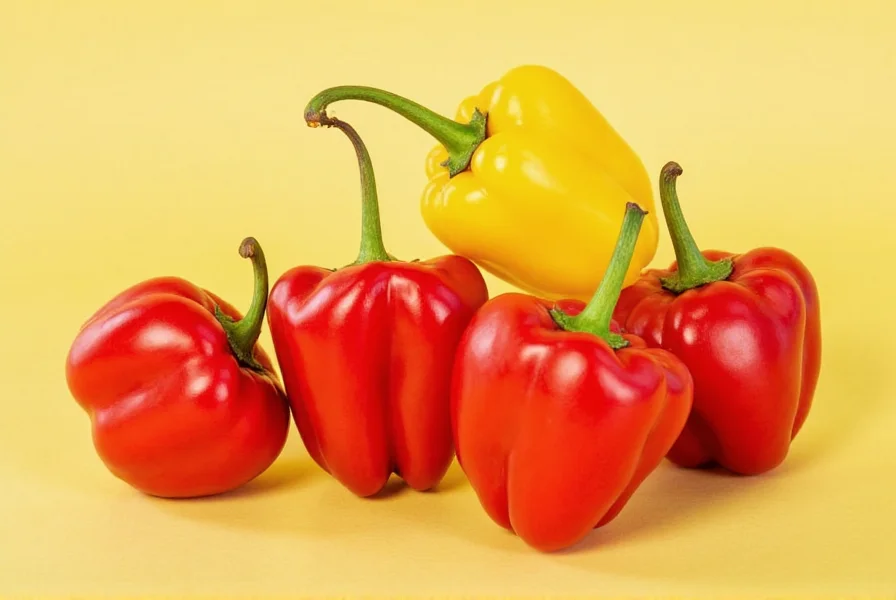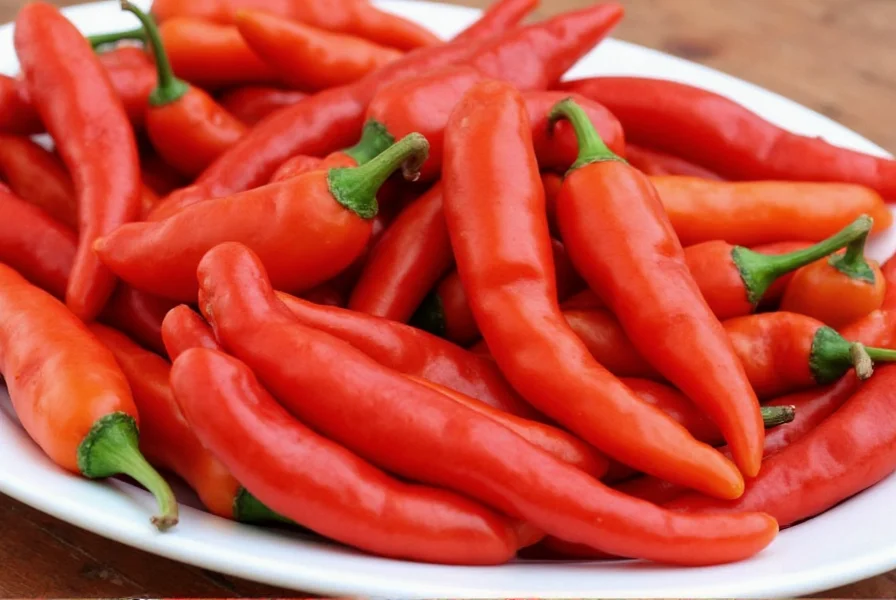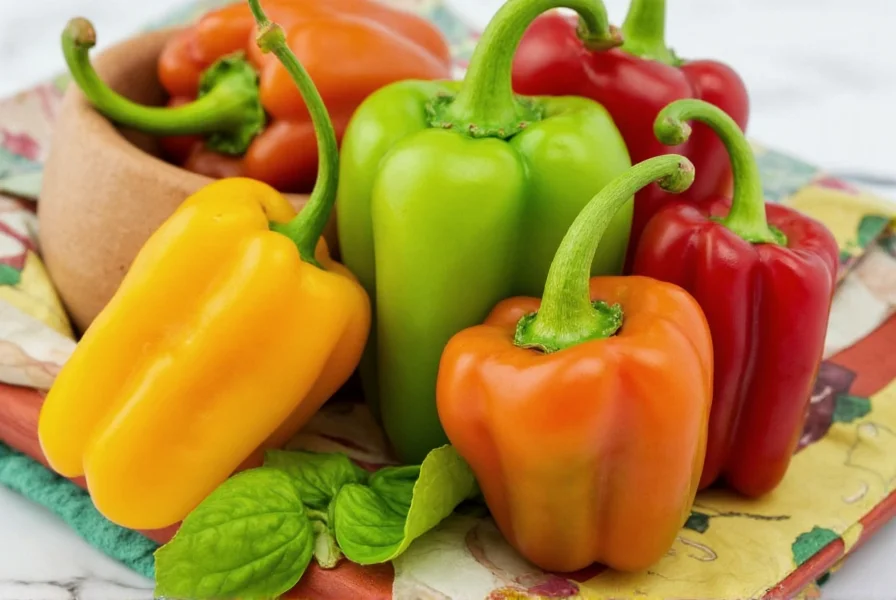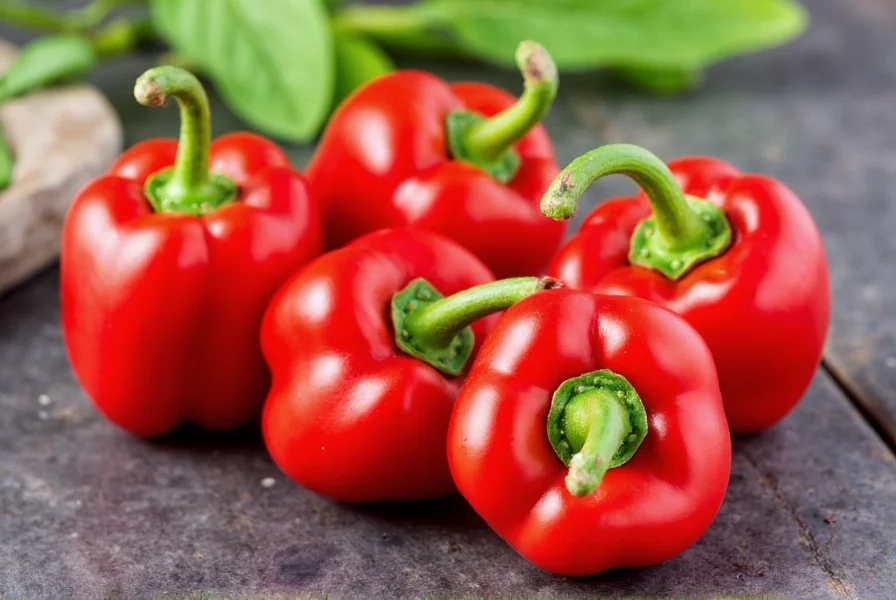Medium spicy peppers are a category of peppers that provide a moderate level of heat, typically ranging from 2,500 to 50,000 Scoville Heat Units (SHU). They deliver noticeable spice without overwhelming your palate, making them ideal for enhancing dishes while remaining accessible to most palates. Whether you're new to spicy foods or a seasoned cook seeking balanced heat, these peppers offer versatile flavor profiles perfect for everyday cooking.
| Pepper | Scoville Units | Best Use |
|---|---|---|
| Jalapeño | 2,500 – 8,000 SHU | Salsas, nachos, burgers |
| Serrano | 10,000 – 23,000 SHU | Cheese dips, tacos, soups |
| Ancho/Poblano | 1,000 – 2,000 SHU (fresh); 1,000 – 2,000 SHU (dried) | Chili, sauces, stuffing |
| Banana Pepper | 0 – 500 SHU | Pickling, sandwiches, pizzas |
| Pasilla | 1,000 – 2,500 SHU | Mole sauce, stews, marinades |
Top 5 Medium Spicy Peppers for Everyday Cooking
These peppers strike the perfect balance between flavor and heat:
- Jalapeño: The classic choice for salsas, nachos, and burgers with consistent moderate heat.
- Serrano: Brighter and more intense than jalapeños, perfect for adding punch to tacos and dips.
- Ancho/Poblano: Mild when fresh, smoky and rich when dried—ideal for sauces and stuffed dishes.
- Banana Pepper: Sweet and tangy with minimal heat, great for pickling and sandwiches.
- Pasilla: Earthy complexity with moderate heat, excellent for mole and stews.

Understanding Heat Levels: How Medium is "Medium"?
Spice intensity is measured on the Scoville scale. Medium peppers typically fall between 2,500–50,000 SHU, placing them between mild bell peppers (0 SHU) and super-hot habaneros (100,000–350,000 SHU). This range provides noticeable warmth without the intense burn of hotter varieties, making them accessible for most people.
How to Use Medium Spicy Peppers in Everyday Cooking
- Salsas & Dips: Blend jalapeños or serranos with tomatoes, onions, and lime for vibrant, balanced salsas.
- Stuffed Peppers: Poblano peppers hold fillings like cheese or meat beautifully when roasted.
- Grilling & Roasting: Charred pasillas develop deep, smoky sweetness for sauces and marinades.
- Pickling: Banana peppers become zesty, crunchy additions to sandwiches and salads.
- Marinades: Pureed serranos or ancho peppers infuse meats with spicy depth without overpowering.
Buying Guide: Choosing the Best Medium Spicy Peppers
Look for firm, brightly colored peppers without soft spots. Green jalapeños are milder than red ones; dried peppers like anchos should feel pliable, not brittle. Here's what to consider:
| Pepper | Heat Level | Best Use | Seasonality |
|---|---|---|---|
| Jalapeño | Moderate | Salsa, nachos, burgers | Fall through winter |
| Serrano | Medium-Hot | Cheese dips, tacos, soups | Spring through fall |
| Ancho / Poblano | Mild-Medium | Chili, sauces, stuffing | Dried year-round; fresh late summer |
| Banana Pepper | Mild | Pickling, sandwiches, pizzas | Summer through early fall |
| Pasilla | Medium | Mole sauce, stews, marinades | Dried year-round; fresh fall |

Storage and Handling Tips for Freshness
- Fridge: Store unwashed peppers in a plastic bag in the crisper drawer for up to 1 week.
- Freeze: Roast jalapeños or serranos and freeze in ziplock bags—no thawing needed for cooking.
- Pickling: Turn banana peppers or jalapeños into long-lasting jarred delights.
- Drying: Hang ancho or pasilla peppers in a ventilated area; store dried in airtight containers.
- Oil Packing: Preserve roasted peppers in olive oil with herbs for gourmet condiments.
What exactly qualifies as a "medium" spicy pepper?
Medium spicy peppers typically fall between 2,500 and 50,000 Scoville Heat Units (SHU). This range provides noticeable heat that enhances flavor without overwhelming your palate. Peppers like jalapeños, serranos, and poblanos fit comfortably in this category, offering enough spice to add excitement to dishes while remaining approachable for most palates.
How can I reduce the heat of medium spicy peppers if they're too hot?
To reduce heat, remove the white pith and seeds where most capsaicin concentrates. Soaking sliced peppers in salt water for 15-20 minutes can also draw out some heat. Cooking peppers longer reduces their spiciness, as does pairing them with dairy products like yogurt or sour cream, which contain casein that counteracts capsaicin. For immediate relief while eating, have milk or bread handy rather than water, which spreads the heat.
Are medium spicy peppers safe for children to eat?
Most medium spicy peppers are safe for children in moderation. Start with milder varieties like banana peppers or poblano peppers, and use them sparingly in familiar dishes. Avoid serving raw hot peppers to young children. For kids just exploring spice, try roasting or cooking peppers to mellow their heat, or use them as flavoring without including the actual pepper pieces in the dish. Always watch for reactions and let children control their own spice exposure.
What's the difference between fresh and dried medium spicy peppers?
Drying peppers concentrates their flavor and often changes their heat profile. For example, fresh poblanos are mild-medium (1,000-2,000 SHU), but when dried into anchos, they develop a richer, smokier flavor with slightly increased heat (1,000-2,000 SHU). Dried peppers generally have deeper, more complex flavors with earthy or smoky notes, while fresh peppers offer brighter, grassier flavors. Dried peppers also keep much longer and can be rehydrated for sauces or ground into powder for seasoning.
How do I handle medium spicy peppers without burning my hands?
Always wear gloves when handling spicy peppers, especially when cutting or seeding them. If you don't have gloves, wash your hands thoroughly with soap and cool water immediately after handling (avoid hot water, which opens pores). Never touch your face, especially eyes, while handling peppers. If you do get pepper burn on your skin, try washing with vinegar or applying milk, then soap and water. For severe burns, rubbing alcohol can help neutralize the capsaicin.
Can I substitute one medium spicy pepper for another in recipes?
Yes, but with some considerations. Jalapeños can generally substitute for serranos, but you'll need about 1.5-2 times as many jalapeños to match serrano heat. Poblanos work well as milder substitutes for jalapeños. When substituting, consider both heat level and flavor profile—banana peppers are sweeter while serranos are brighter. For dried peppers, 1 dried pepper typically equals 3-4 fresh ones. Always taste as you go when substituting to adjust for flavor and heat differences.
Conclusion: Spice Up Your Life with Balanced Heat
Medium spicy peppers are the ultimate kitchen tool for adding exciting flavor without overpowering heat. They're versatile enough for beginners yet complex enough for seasoned cooks, making them perfect for everything from weeknight dinners to special occasions. Next time you're at the market, grab a few medium peppers and discover how they transform ordinary dishes into something extraordinary—one perfectly balanced bite at a time!












 浙公网安备
33010002000092号
浙公网安备
33010002000092号 浙B2-20120091-4
浙B2-20120091-4